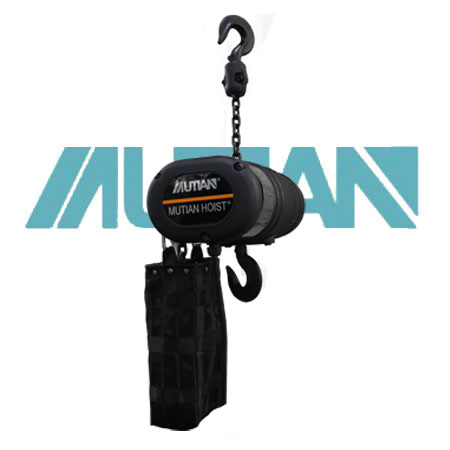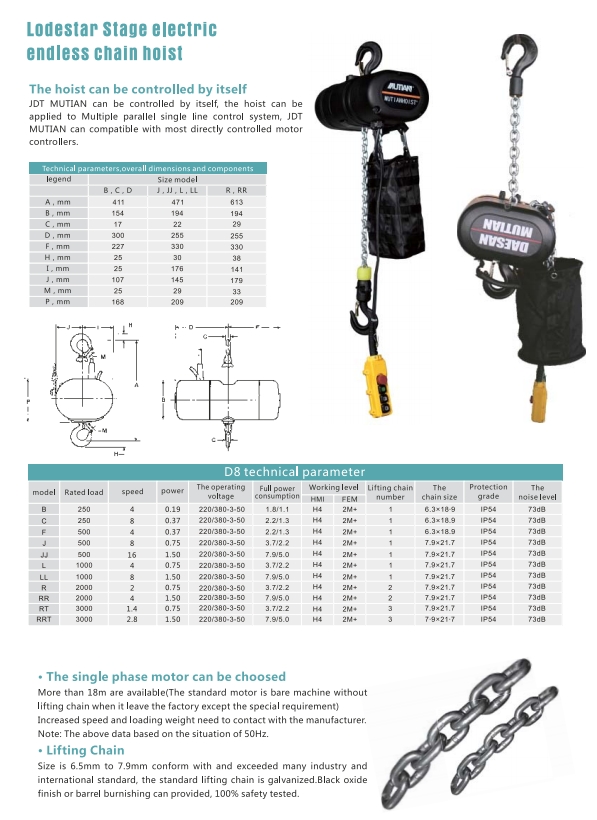 中文版
中文版



Welcome to contact us by phone:0086-0312-7969888
The term "stage electric motor" might refer to an electric motor used in various stage machinery, including electric chain hoists, winches, or other equipment used in stage productions. The key components of an electric motor commonly used in stage applications include:
Stator:
The stator is the stationary part of the electric motor that produces a magnetic field when an electrical current passes through it. In an alternating current (AC) motor, the stator typically consists of coils or windings.
Rotor:
The rotor is the rotating part of the motor that responds to the magnetic field produced by the stator. As the rotor turns, it generates mechanical motion that can be used to drive the load.
Shaft:
The shaft is connected to the rotor and extends outside the motor casing. It transfers the mechanical energy generated by the rotor to the external equipment, such as a gearbox or a drum in the case of a hoist or winch.
Bearings:
Bearings support the shaft and rotor, allowing them to rotate smoothly. Proper bearing lubrication is essential for minimizing friction and ensuring efficient motor operation.
Housing or Casing:
The motor's housing or casing encloses the internal components, providing protection from external elements and ensuring the safety of the motor's operation.
Windings:
In the case of an AC motor, the stator windings create a magnetic field when supplied with AC power. This magnetic field interacts with the rotor, inducing rotation.
Commutator (DC Motors):
In direct current (DC) motors, the commutator is a rotary switch that reverses the direction of the current flow in the rotor windings, ensuring a continuous rotation.
Brushes (DC Motors):
In DC motors, brushes maintain electrical contact with the commutator, allowing the flow of current to the rotor windings. Modern DC motors may use brushless technology.
Cooling System:
Larger or more powerful motors may include cooling systems, such as fans or cooling fins, to dissipate heat generated during operation.
Wiring and Terminals:
Wiring connects the motor to an external power source, and terminals provide points for electrical connections. Proper wiring is essential for the safe and reliable operation of the motor.
Encoders or Sensors (Optional):
In some applications, motors may include encoders or sensors to provide feedback on speed, position, or other parameters, allowing for precise control.
The specific design and components of a stage electric motor can vary based on the type of motor (AC or DC), the application, and the manufacturer's specifications. Motors used in stage machinery are often chosen for their reliability, efficiency, and precise control capabilities.

X